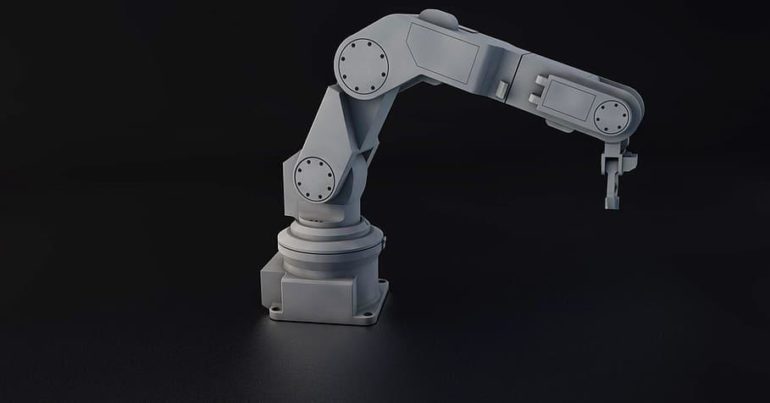The pandemic has offered challenges and a major opportunity to robotics firms in the logistics and grocery spaces. Unforeseen stresses to supply chains and runs on products have emphasized the need for greater supply chain efficiencies. Workforce constraints due to safety protocols and illness have also hammered various sectors.
The lessons of 2020 can help us read the tea leaves for the priorities and trends in the robotics sector in 2021. Predictions are always to be taken with a grain of salt, but this year’s batch come with the benefit of a lot of hindsight and hand wringing.
To explore the year in robotics, I connected with Tim Rowland, CEO of Badger Technologies. A product division of Jabil, a Badger is a manufacturing solutions provider that delivers comprehensive design, manufacturing, supply chain, and product management services as well as retail automation solutions that feature autonomous robots. That makes Rowland well positioned to offer a vantage on 2021 in some of the sectors most impacted by COVID-19 but also most primed for evolution.
1) Expect robots to pinpoint exact product locations
“Autonomous robots took on more expansive roles in stores and warehouses during the pandemic,” says Rowland, “which is expected to gain momentum in 2021. Data-collecting robots shared real-time inventory updates and accurate product location data with mobile shopping apps, online order pickers and curbside pickup services along with in-store shoppers and employees.”
That’s especially key in large retail environments, with hundreds of thousands of items, where the ability to pinpoint products is a major productivity booster. Walmart recently cut its contract with robotic shelf scanning company Bossa Nova, but Rowland believes the future is bright for the technology category.
2) Multipurpose robots measure up as mavens of multitasking
Heretofore, automation solutions have largely been task-specific. That could be a thing of the past, according to Rowland.
“Autonomous robots can easily handle different duties, often referred to as ‘payloads,’ which are programmed to address varying requirements, including but not limited to, inventory management, hazard detection, security checks, surface disinfectants, etc. In the future, retailers will have increased options for mixing/matching automated workflows to meet specific operational needs.”
3) COVID-19 proved there’s a limited supply in the world
Remember running out of toilet paper? So do retailers and manufacturers, and it was a major wake up call.
“Major restock runs and a surge in online shopping quickly depleted shelf inventory, especially during the run on paper products early in the pandemic,” says Rowland.
That’s could be a new reality throughout the 2020s with a warming planet and increasing unpredictability. So what’s the solution? One thing that’s clear is automation will play a huge role.
“Ensuring adequate supplies of “high flyers” requires integration of shelf-level data with backroom, warehouse and supply chain information. To avoid visible holes on shelves, retailers will increase the use of robotics to correlate inventory data with POS, warehouse management and order management systems.”
4) Independent, regional grocers adopt robots with increased agility and speed
I’ve been writing about the migration of robots to mid- and even small-sized business for the better part of a decade, and grocery stores might be the crowning case-in-point. As I wrote earlier this year, even bodegas are now able to use automation technologies that debuted just a couple years ago in major chains.
“Most grocers test any technology they bring into their stores before widespread deployments,” says Rowland. “In 2020, independents like Woodman’s Markets, increased their deployments of in-store robots while larger entities like Walmart scaled back. Not only do independent, regional grocers have greater freedom and agility to trial new technologies, they’re also keen to automate wherever possible.”
5) Issues with labor shortages will continue
It may be hard to remember this far back, but we entered 2020 with a tight labor market. Even with all the COVID-related layoffs, it’s not clear that’s going away.
“As the labor market continues to tighten, retailers increasingly will look for ways to automate previously manual, mundane tasks,” says Rowland, perhaps touching a nerve for automation alarmists. “Multipurpose robots shine when it comes to oft-dreaded shelf scans, performing scans in hours instead of days and with up to 95% accuracy. Let’s face it, no employee wants to perform mind-numbing, tedious tasks, so let the robots do it—they’ll never get bored or distracted.”
6) Data-driven insights necessitate seamless integration
“The more comfortable retailers become with autonomous robots roaming store aisles safely alongside shoppers and employees, the faster they can redirect attention to what matters most—the ability to elevate customer satisfaction while increasing store revenue and profitability.”
What we’re talking about here is store scanning robots. This past year saw Bossa Nova lose a contract to Walmart that had been the sector’s favorite case study, but that shouldn’t tarnish the broader outlook or need for the technology.
“To accomplish this, however, retailers need to connect the dots between shelf-scanning results and corresponding department, category, vendor, sell-through and pricing data.”
7) Sensors, drones and fixed cameras become the ideal robot accessory
Can somebody say technology convergence? The story of robotics over the last decade has been one of falling sensor prices and rapid technology convergence. Will that change in the year ahead? In a word: Nope.
“In 2021, it’s highly likely that autonomous robots will be teamed with other in-store technologies, such as fixed cameras, drones and all types of sensors, to enhance data-collection capabilities. It’s all about attaining real-time visibility, especially in those hard to reach, hard to see places. A bevy of sensors will enhance a robot’s “sensing” abilities, including detection of certain gases emitted when foods lose freshness or are stored improperly.”
8) 5G will have a profound impact
“Investments—of substantial size—in the latest wireless technology are going to pay off in many aspects of retail as it promises to unleash new experiences. Mega-trending 5G is poised to deliver unheralded speed and bandwidth to ensure shared visibility of retail data without impacting other in-store network operations. Expect 5G to go from pilot to production phase throughout the retail industry.”
9) The M&A scene will remain active
There’s an interesting financial story behind this technology story, and it has to do with the fact that grocery chains are rapidly merging to compete with Amazon and Walmart. That’s creating an interesting need for data, which automation solutions can provide in a scalable way.
“An increased frequency of mergers and acquisitions in the grocery sector will remain in the forecast. This is exemplified by the recent news of Ahold Delhaize acquiring FreshDirect along with HelloFresh’s acquisition of rival Factor75. Meanwhile, Food Lion secured FTC clearance to acquire 62 Bi-Lo/Harveys supermarket stores. As M&A activity continues, so does the need to integrate disparate data from different legacy systems to ensure end-to-end operational visibility.”



